I am not fully sure as to how this circuit works. I know that during the positive half cycle D1 is on and C1 charges to V volts, and that during the negative half cycle D1 will become off and D2 conduct. So some charge flows from C1 to C2, keeping C2's voltage at some level until the next negative half cycle. But how will the voltage across C2 end up being at ~2V volts at the end?

simulate this circuit – Schematic created using CircuitLab
Edit: D1 is on when it's negative half cycle and off when positive. I knew this.